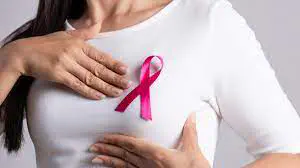Sex and Gender-based Analysis of this topic
Definition
Breast cancer is the most commonly diagnosed type of cancer among women in Canada and, after lung cancer, is the second leading cause of mortality among women [1]. Each year in Canada, there are roughly 22,000 new breast cancer diagnoses and 5,000 deaths due to breast cancer. Roughly one in 9 women will develop breast cancer in her lifetime, while 1 in 29 women will die from breast cancer [2].
Cancer cells start within the ducts or lobules of the breast tissue, which extends from the collarbone to the armpit to the centre of the chest. Adenocarcinoma is the most common type of breast cancer, which includes ductal carcinomas and lobular carcinomas [3, 4]. Breast size is not related to breast cancer incidence, however, dense breast tissue has been identified as a risk factor [5]. There are a number of age-specific breast cancer screening procedures including breast self-exams, clinical breast examinations, and mammography.
Sex Issues
Although risk factors for developing breast cancer are similar between men and women, over 99% of breast cancers occur in women [1]. A woman’s risk for developing breast cancer compounds as she ages. Some of the main risk factors include: previously having breast cancer; a family history of breast cancer (especially a mother, sister, or daughter); or ovarian cancer. Above-average exposure to estrogen has also been identified as a risk factor, which may be related to having never given birth or giving birth for the first time after the age of 30, beginning menstruation at a young age, reaching menopause later than average, or having taken hormone replacement therapy [3, 4].
Gender Issues
Some other risk factors for developing breast cancer include drinking alcohol, being physically inactive, tobacco use, and using birth control pills [3, 4]. Based on a review of breast cancer and tobacco use, active smoking may be related to the development of breast cancer in both pre- and post-menopausal women, while second-hand smoke exposure is a risk for pre-menopausal women [6]. Alcohol may affect how estrogen is produced in post-menopausal women and may affect the risk of developing breast cancer [3].
Diversity
For women over 20years, breast cancer is the most common type of cancer [2]. Specifically, new cases of breast cancer are most common among women aged 50-69years. Deaths from breast cancer are more common compared to other cancers in women aged 30-39years. Breast cancer incident rates are similar across the various provinces and territories of Canada [1] and any provincial differences likely reflect differences in screening. Women without a regular doctor, particularly low-income women, new immigrants, women in rural areas, and/or Aboriginal women may not access regular preventative screening procedures, which may place them at an increased risk for developing breast cancer [7, 8]. Culturally-relevant treatment options may also affect women’s treatment choices, such as removing one or both of the breasts (mastectomy). A number of perceived barriers to clinical breast exams have also been examined in regards to South Asian immigrant women, including not knowing where to go or how to ask for a breast exam or concerns that a breast exam will be embarrassing or uncomfortable [9]. For many Aboriginal populations, cancer detection occurs at later more severe stages of development compared to the general population due to limited screening practices. Women with physical disabilities may not be able to utilize breast and cervical screening procedures at their regular doctor’s offices due to the lack of appropriate medical testing equipment, which may result in lower screening rates [10]. Further, women with disabilities may be less likely to receive standard treatment after breast-conserving surgery, leading to higher mortality rates [11]. Expensive prescription drugs may be a treatment barrier for women who do not have adequate health insurance [7].
Critique
There is limited information on breast cancer rates among Aboriginal women, particularly Métis women [8]. According to the Public Health Agency of Canada, cancer is not listed as one of the key health issues for Aboriginal individuals, such as Diabetes or HIV/AIDS. As a result, there has been minimal data on cancer in Aboriginal communities, especially breast cancer data. However, organizations such as Cancer View are recognizing the importance of cancer research within Aboriginal communities [12]. Researchers have suggested a need for further quantitative studies exploring the relationships between age, smoking initiation, smoking before pregnancy, lifetime exposure to tobacco smoke, and the duration of pack-years smoking [6].
